Encountering Indigenous Australia in books is one thing.
Meeting and living with our Indigenous brothers and sisters in their communities is an entirely different learning experience.

| Places & People | Topics & Issues | Policies & Legislation |
|---|---|---|
| Karunjie Station | Indigenous Land Management, Pastoralism, Cattle Industry and Employment | The ILSC (previously the Indigenous Land Corporation), is a corporate Commonwealth entity established in 1995 to assist Aboriginal and Torres Strait Islander people to realise economic, social, cultural and environmental benefits that the ownership and management of land, water and water-related rights can bring. |
| Walmadany (James Price Point) – Yawuru | Aboriginal Heritage, Industrial Development, Environmentalism and Grassroots Opposition | Native Title and Indigenous Land Rights. Shire of Broome – Aboriginal Heritage Consultation. Aboriginal Heritage Act 1972 (WA) |
| Fitzroy Crossing – Bunuba, Gooniyandi, Nyikina, Wangkatjunka and Walmajarri. | Community Health, Spiritual Health, Violence, Alcohol Licenses, Alcohol Restrictions and Activism. | Section 64 Restrictions are imposed by the Director of Liquor Licensing, where it is in the public interest. (WA Government) |
| Kununurra – Waringarri Radio | Indigenous Media. Waringarri Radio 6WR is part of the Waringarri Media Aboriginal Corporation, a successfully locally owned not-for-profit organisation operating for over 25 years. | First Nations Media Policy Bank |
| Yirrkala – Yolgnu | Indigenous Tourism Businesses. Lirrwi Yolngu Tourism. | Indigenous-led businesses. |
| Sydney, Canberra, Melbourne and the Northern Territory. | Expert Panel on Constitutional Recognition of Aboriginal and Torres Strait Islanders. | Constitutional change. Referendums. |
| Arnhem Land – Yolgnu | Indigenous Engagement and Education. Garma Festivals. | Two-way education and cultural exchange. |
| Canberra | National Congress of Australia’s First Peoples. Indigenous Leadership. | Australian policy analysis and policy debate. |
| APY Lands – Anangu (Pitjantjatjara &Yankunytjatjara) | Indigenous voices. Indigenous media. Radio 5NPY. | |
| Aboriginal Tent Embassy | Indigenous Activism. |







Fregon Exchange (1980s)
As a young primary school student at Victor Primary School (South Australia), Craig participated in the Fregon Exchange program at 11 years of age.
This program was established by visionary teacher Chris Tapscott and provided young students with the opportunity to learn first-hand about the Pitjantjatjara people, language and culture.
Chris Tapscott went on to be the Principal of the Port Elliot Primary School in South Australia.

[Newspaper Article]
Award for Victor Teacher
Victor Harbor Primary School teacher Chris Tapscott was presented with a quarterly equal opportunity achievement award by equal opportunity commissioner Josephine Tiddy yesterday.
He received the award for establishing and maintaining the Fregon Victor Harbor Cultural Exchange Program. Ms Tiddy said the program had contributed to greater cultural understanding between the students at Fregon in the State’s far north-west and Victor Harbor “The Kahjiti community recognises the program for the skills, knowledge and experience gained by its young people.
“With the increase in their confidence comes greater access to the wider community, opportunities for equal participation and the ability to cope with issues they as Pitjantjatjara people may face. ”The program achieves greater understanding between the Aboriginal and non-Aboriginal community and helps to dissolve stereotypical attitudes which should result in less discrimination against Aboriginal people,” she said. Mr Tapscott was nominated for the award by Ann Hammond, wife of the principal at the Fregon school.
“It’s great to get recognition because it’s not often that you get it when you’re working in a minority area, except for in your local area,” he said. “I’ve received very positive feedback from the local community but it’s nice to receive more widespread acclamation.”
Mr Tapscott said he believed the Fregon project had been so successful because it was exciting for both students and parents. “It excites the kids and parents because it’s a unique thing.” he said. “When parents sign their kids up to be involved they know they will never get the opportunity to do it again. “They would never get to see what they see at Fregon, so the trip involves an opportunity that otherwise would not exist. “
Source: The Times, Friday 1 June 1990, page 3
Accessed via Trove: 25th October 2021
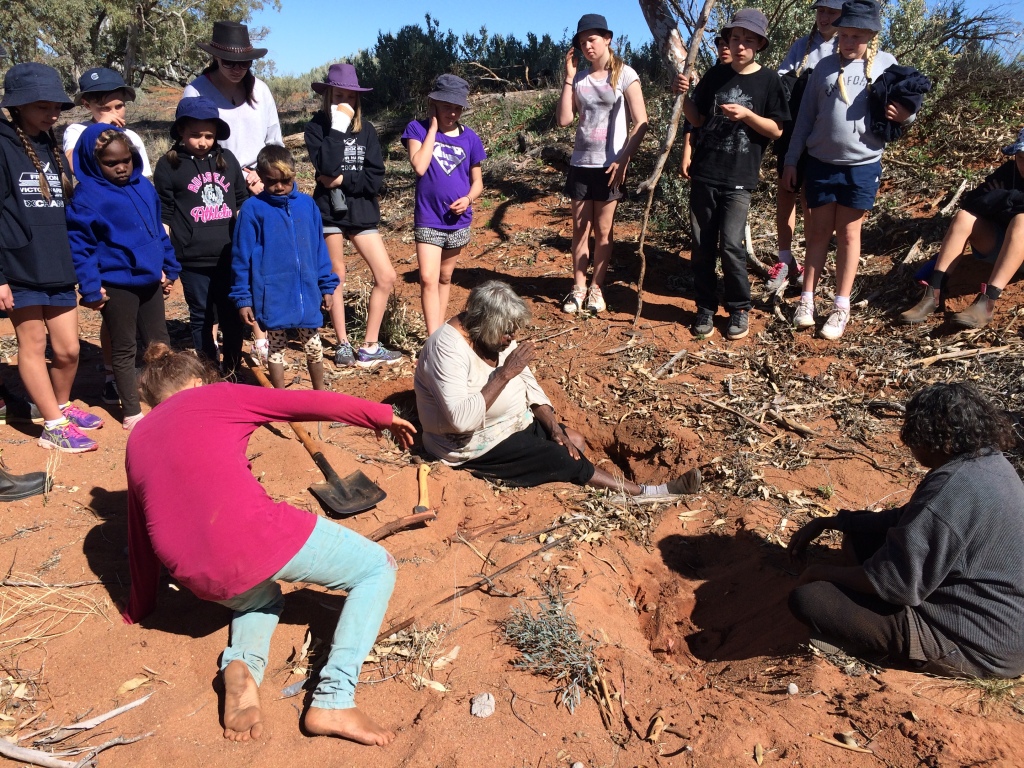
Fregon Exchange Program Continues to this Day
The exchange program still runs at Victor Harbor Primary School.
“After 35 years of operation, Fregon camp allows our students the opportunity to mix with Fregon students, teachers, parents and elders to learn more about the rich culture and history of the Fregon mob. It is impossible to go on a school camp to Fregon and Uluru and not come home in awe of what you have experienced.
Our students are privileged to be part of an extraordinary exchange programme that will give them an amazing new understanding of our breathtaking country and its beautiful Indigenous people who have retained so much of their language and culture in the APY Lands (Anangu Pitjantjatjara Yankunytjatjara)
Some of the experiences whilst staying in Fregon included spear making for the boys, gum nut necklace making, a traditional art and language lesson, basket weaving, a local footy game and the infamous witchetty grub hunting/eating.
…
It is a very special experience that helps create a strong bond between the year 7 students where they all learn something about themselves, especially how resilient they are and have become.
The exchange program then continues and we see some upper primary Fregon mob, including some elders, come to visit Victor Harbor and our community in November.”
Source: Victor Harbor Primary School.





Rirratjingu Aboriginal Corporation (2013-2016)
From 2013-2016, Craig worked on a number of contracts with the Rirratjingu Aboriginal Corporation (RAC), Rirratjingu Mining (Quarry Operation) and the Bunuwal Group under the leadership of CEO, Stuart MacLean.
Projects Undertaken: Annual Report, Social Media Content, Royalties Distribution Assistance, Meeting Preparations, Executive Assistance (Administration/Reception), Photography, Quarry Supervision, Quarry Site Inspections, Stakeholder Engagement, Event Support and Public Relations.





National Congress of Australia’s First Peoples (2017-2018)
Craig worked as the Media & Communications Manager with the National Congress of Australia’s First Peoples in the Canberra office. Working alongside CEO Gary Oliver and Co-Chairs Dr Jackie Huggins AM and Rod Little MAICD.


Dr Jackie Huggins AM is a Bidjara (central Queensland) and Birri-Gubba Juru (North Queensland) woman from Queensland who has worked in Aboriginal and Torres Strait Islander affairs for over thirty years. Jackie left school at age 15, but returned to study at 26 and three degrees later finished tertiary education. Jackie is an author and consultant on indigenous affairs, whose career has included the University of Queensland, serving on the boards of the Council for Aboriginal Reconciliation, Reconciliation Australia and the inquiry into the Separation of Aboriginal Children from Their Families. Jackie is the former co-chair of the National Congress of Australia’s First Peoples.

“Following a visit to Australia last year, the UN Special Rapporteur on the Rights of Indigenous People detailed a plethora of human rights failings in her End of Mission Statement. Ms. Tauli-Corpuz described the progress on the Closing the Gap targets as ‘woefully inadequate.’
As you can see, Australia’s human rights record may more accurately be described as woeful rather than exemplary.
Indeed, we have reached a crisis point in Aboriginal and Torres Strait Islander affairs. The recent Closing the Gap report reveals that only three of the seven targets are on track to be met.
Despite making up 3% of the population, First Peoples comprise 27% of the nation’s prison population, making Australia’s Indigenous incarceration rates the worst in the world.
Imprisonment rates are even worse for Aboriginal and Torres Strait Islander young people, who represent 50 per cent of the youth prison population.
Aboriginal and Torres Strait Islander women make up 33 percent of the female prison population in Australia. Of these, 90% of have been victims of violence or sexual assault, and 80% are mothers.
Aboriginal and Torres Strait Islander women are 32 times more likely to be hospitalised due to family violence than their non-Indigenous counterparts.
The most recent statistics on life expectancy reveal the gap between First Peoples and non-Indigenous Australians is at 10.6 years for males and 9.5 years for females.”
‘Australia’s First People to the UN: govt statements are ‘hypocritical in the extreme’ (2018)
The Mandarin
By Jackie Huggins



PY Media (2018-2019)
Craig worked alongside PY Media Manager Thomas Holder and a team of PY Media broadcasters across six remote Radio 5NPY studios on the APY Lands of northern South Australia.
Employed as a Radio Support Officer (RIBS), Craig worked on a range of projects with the PY Media team. He recruited, trained and assisted broadcasters with live and pre-recorded radio programs, social media content production, live events, short video productions and radio interview preparations.


This was a one year contract for Craig that included time spent in Umuwa, Kaltjiti (Fregon), Amata, Mimili, Iwantja (Indulkana), Pukatja (Ernabella), Pipalyatjara and Alice Springs.



Aboriginal Tent Embassy (Canberra) 2011 & 2016
On two separate occasions, Craig spent several weeks at the Aboriginal Tent Embassy on Ngunnawal country in Canberra. His first stay was towards the end of his Australian motorcycle tour in 2011. Then again he stayed briefly in 2016. Both stays were tremendously insightful. Craig was fortunate to spend time with both Jude Kelly in 2011 and with Gambaynggirr man Roxey Foley, the son of renowned activist and academic Gary Foley.
The Aboriginal Tent Embassy is a unique site of great political significance for the vast majority of First Nations people. On any given day the Embassy attracts supporters from around the world, including Elders, Ambassadors, Cultural Attaches, academics, protest groups, activists, students, media crews and tourists.
Craig participated in the full range of communal activities at the Embassy, assisted with media engagements, spoke with students, joined community forums, liaised with custodians, attended memorials and helped keep the sacred fire burning.
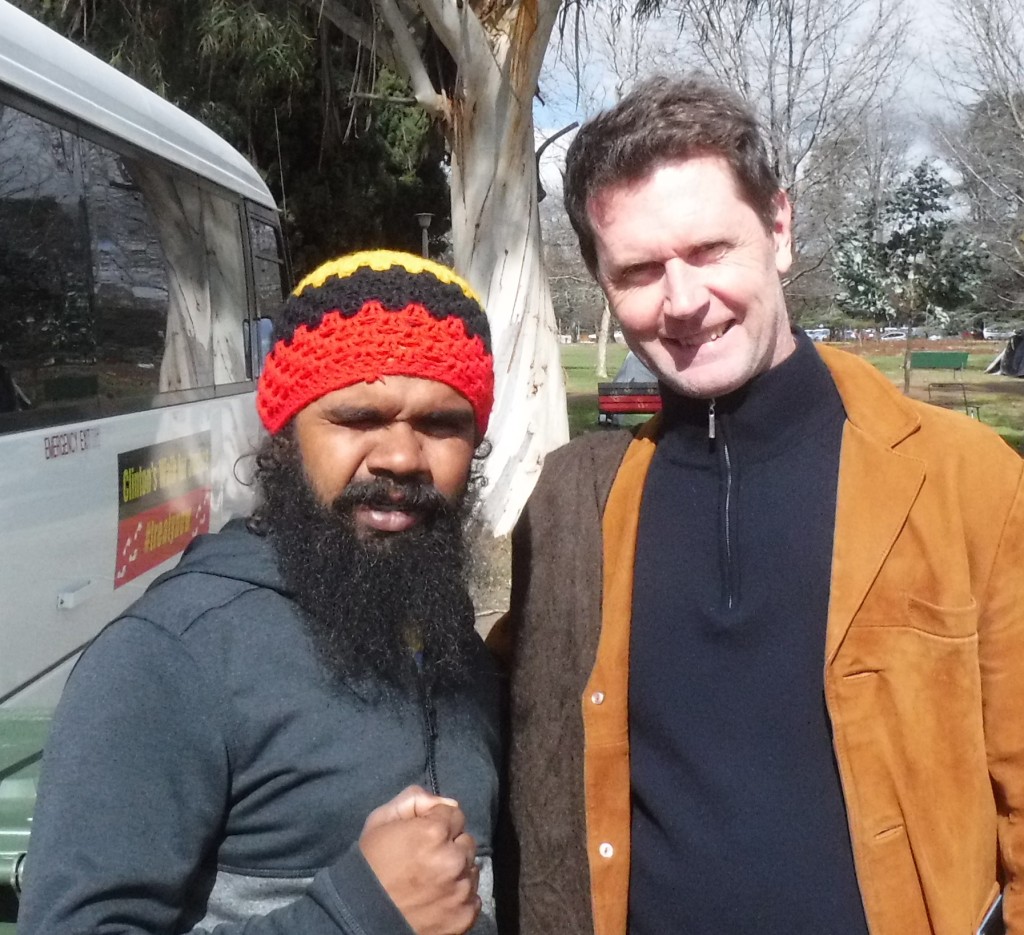
In September 2017, Craig visited the Embassy to welcome “Spirit Walker” Clinton Pryor as he ended his epic walk across Australia “for justice”.

The ACT Greens have called for the Aboriginal Tent Embassy to become an “interim national institution,” but said it would operate differently to other institutions such as the National Gallery of Australia and the Australian War Memorial.
The Tent Embassy should be supported by the National Capital Authority, the Greens said, as part of a way to use national institutions “to progress reconciliation”.
The call was made in the ACT Greens’ submission to the federal inquiry into funding and governance arrangements for Canberra’s museums and galleries and other institutions. The inquiry’s terms of reference also include “the process for establishing new institutions”.
Greens spokesman for Aboriginal and Torres Strait Islander Affairs Shane Rattenbury said the Aboriginal Tent Embassy on the lawns of Old Parliament House should be given the same official standing as Parliament House and Old Parliament House.
“Until the Australian constitution contains a clause that gives Aboriginal people of our first nations respect and recognition towards a formal treaty, it would be appropriate for the Aboriginal Tent Embassy to be given standing as an interim national institution,” Mr Rattenbury and fellow Greens MLA Caroline Le Couteur said in the submission.
“ACT Greens want Tent Embassy to be a recognised national institution”
Sydney Morning Herald
By Sally Whyte
May 15, 2018
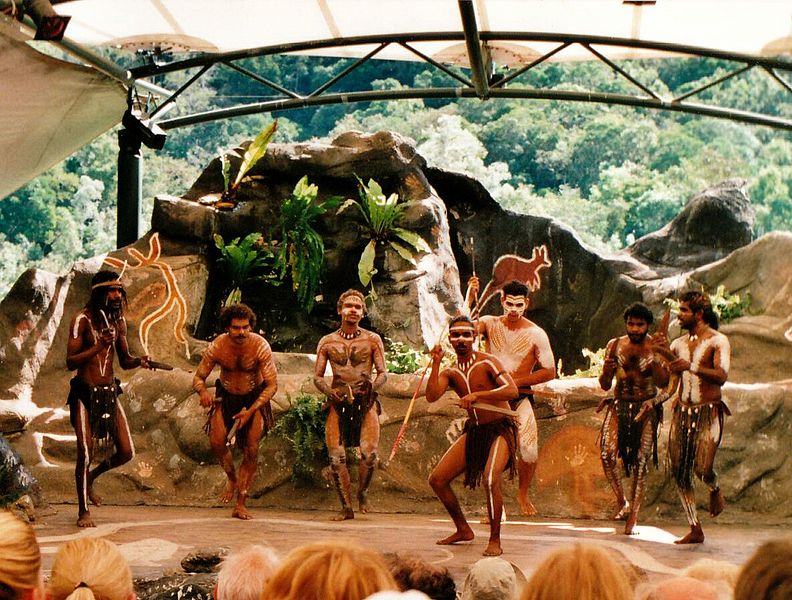

Cairns Queensland (1990s)
In the early to mid-1990s Craig worked in the tourist industry in Cairns Queensland. In this environment, he was introduced to various ‘packaged tourism experiences’, namely tours for domestic and international tourists.
During his time in Cairns Craig went on various familiarisation tours to the Kuranda markets, Tjapukai Aboriginal Culture Park, Rainforestation and to various visitor centres located in Far North Queensland. It was here that he learnt about the Kuku Yalanji people.
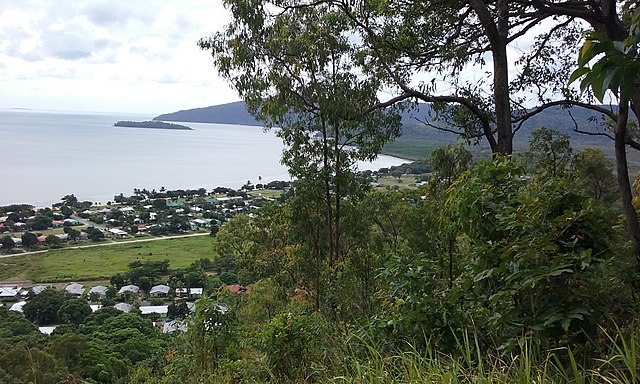
‘Black Tracks’ – Television Program
In 1997, Craig teamed up with Warren Clements (Host), David Tunnell (Director), Brett Goodman-Jones (DoP) and the ITV production crew to produce an innovative Indigenous tourism television program called ‘Black Tracks’.
The program showcased Indigenous tourism businesses and was launched at the Yarrabah culture centre in Far North Queensland.
Craig visited several communities in Far North Queensland and came to understand some of the related colonial and mission histories.
- Kuranda
- Wujul Wujul
- Yarrabah
For many Australians it is hard to comprehend that the last Aboriginal mission in Queensland closed in 1987. The tiny community of Wujal Wujal on Cape York Peninsula was once the Bloomfield River Mission, and remained under the control of the Hope Vale Mission Board until 1987.
Together with fourteen other ‘Deed of Grant in Trust’ (DOGIT) communities, Wujal Wujal is a testament to the survival of Aboriginal people and Torres Strait Islanders despite legislation introduced by the Queensland Government in 1897 which effectively controlled the lives of Aboriginal and Torres Strait Islander people, the Aboriginals Protection and Restriction of the Sale of Opium Act, 1897. At that time there had been, according to historian Val Donovan, a ‘general perception that Aboriginal society was doomed to extinction’.
Many groups did not survive due to disease or massacres, but residents of those communities have spiritual and emotional wounds that in many cases will never heal and their journey cannot be comprehended. More than 7000 Aboriginal people were removed to 64 missions and reserves established throughout Queensland between 1898 and 1939.
Although they were geographically isolated, missions and reserves were often established at existing Aboriginal campsites or nearby to their freshwater supply. Aboriginal people’s knowledge of landscape and their survival and cultural skills had once been invaluable to the early explorers and settlers. Their support continued through droving times as station hands or during the war years assisting European women left on properties for long periods while their men were away.
‘Missions and reserves’ By Trish Barnard, Queensland HIstorial Atlas
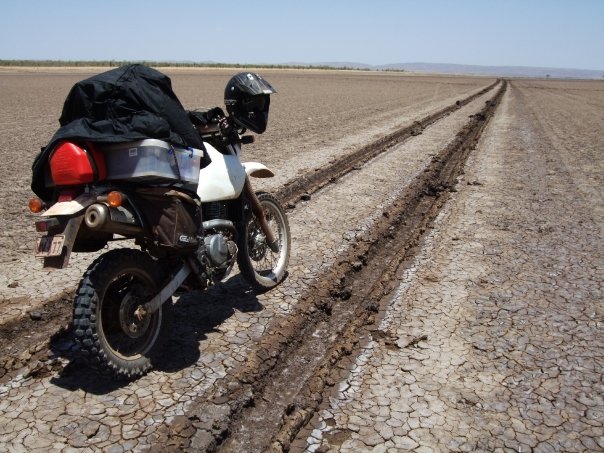

Australian Tour (2009-2010)
In 2009 Craig set off to tour around Australia on a motorcycle. This experience taught him much about life in regional and remote Australia, in particular about the lives of Indigenous Australians.
Here are some of the destinations, highlights and insights.


Karunjie Station: For a few days Craig spent time on Karunjie Station, which was owned and operated by the entity known as the Indigenous Land Council. The bull catchers allowed Craig to tag along and document their working lives in a photo essay.
Here are some perspectives on research on the ILC back in 2008.


Broome: Attended the Walmadany Concert for Heritage. Broome at the time was debating the massive development of James Price Point. At the concert Craig was backstage speaking with performers and activists, taking photos and capturing the night.


Ardyaloon (One Arm Point): Stayed local Bardi Elder Bruce Wiggan. Spent time turtle hunting with the locals. Craig’s time with Bruce was recorded in a travel article he published in 2009 with the Get Lost! Magazine.



McGowan Island Beach (near Kalumburu): Stayed a couple of weeks in and around Kalumburu in the Kimberley. Learnt a little of the mission history of Kalumburu.


Punamii-Umpuu (Mitchell Falls): Stayed a few days around King Edward River and the Mitchell Falls.

Looma: Craig paid an overnight visit to Looma and spent some time fishing with Giddeon and Roy.

Fitzroy Crossing: Spent time speaking with Patrick Davies about mental health, spiritual healing, alcohol restrictions and FASD.

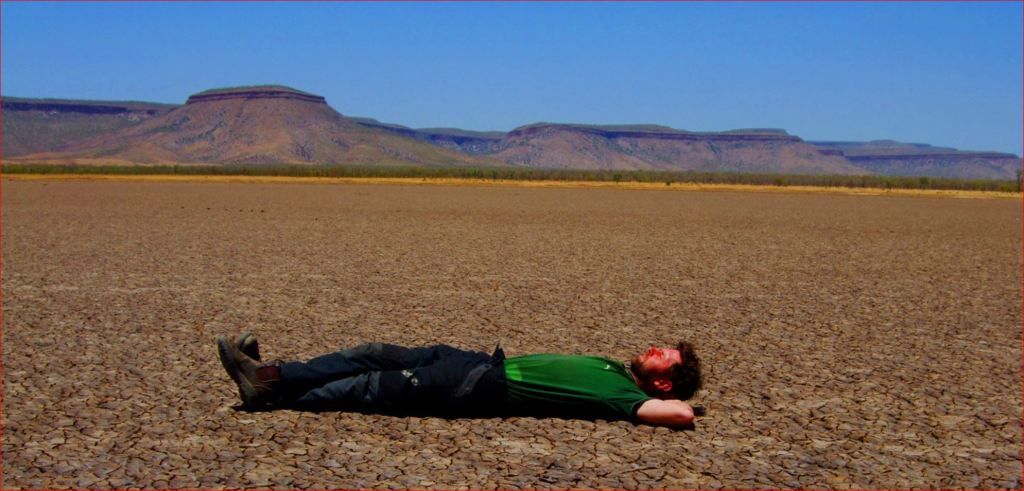

Wyndham & Kununurra: Craig spent a couple of weeks touring the country around Wyndham and Kununurra speaking with locals and international visitors about their impressions of this part of Australia.

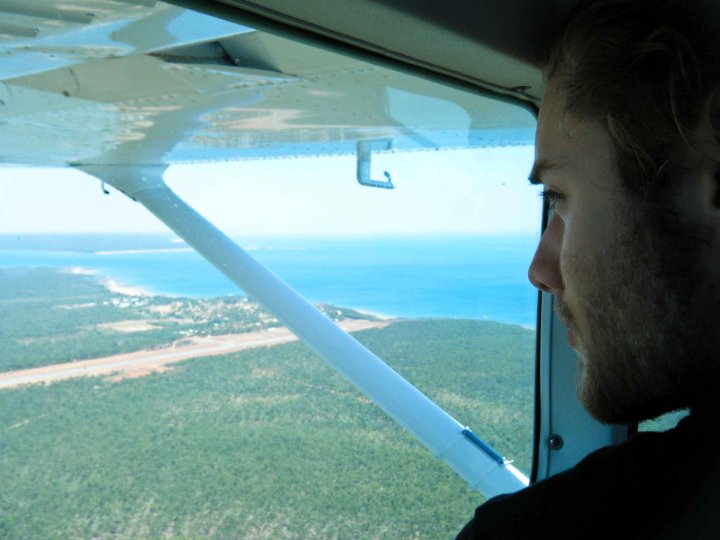

Galiwin’ku (Elcho Island): Assisted representatives of the Yolngu Radio executive survey the community about their views on Yolngu Radio operations and radio programming.



Bawaka Homeland: Volunteered at Bawaka to work on a number of small maintenance and infrastructure projects working alongside members of the Gumatj clan.

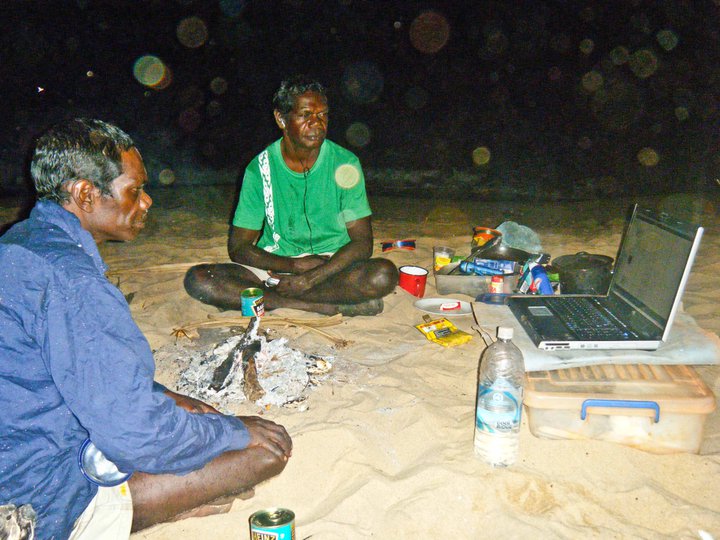
Nhulunbuy: For the first couple of weeks on Craig’s first visit to northeast Arnhem Land camped in and around Nhulunbuy, before being advised by the Rangers to move to Yirrkala. Camping at Crocodile Creek was not advised.


Yirrikala: Craig camped by Yirralka Ranger Wendy Marika’s home, before accepting an invitation to stay with Timmy Burarrwanga’s family in Yirrkala. He stayed in Yirrkala for several weeks in 2010, before returning in 2011 to work with Lirrwi Yolngu Tourism.
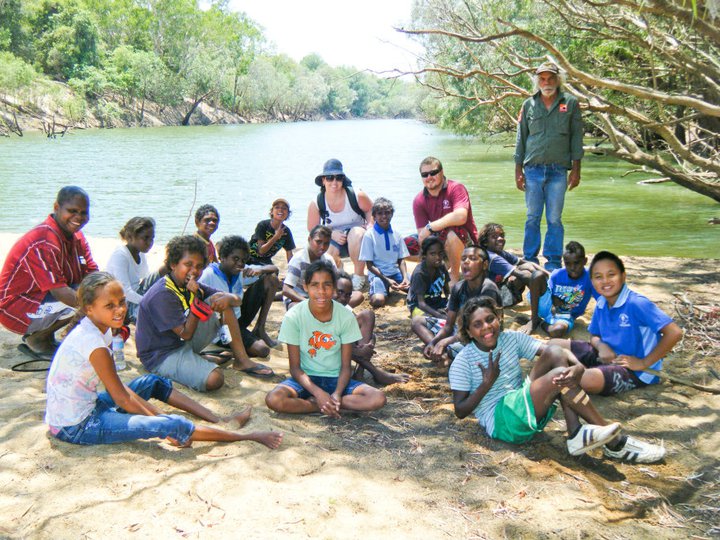


Kowanyama: Craig stayed with a local police officer in Kowanyama and spent time fishing, shooting and joining local school groups on excursions.


Hope Vale: Stayed at Eddie’s camp on the coast a short drive from Hope Vale.

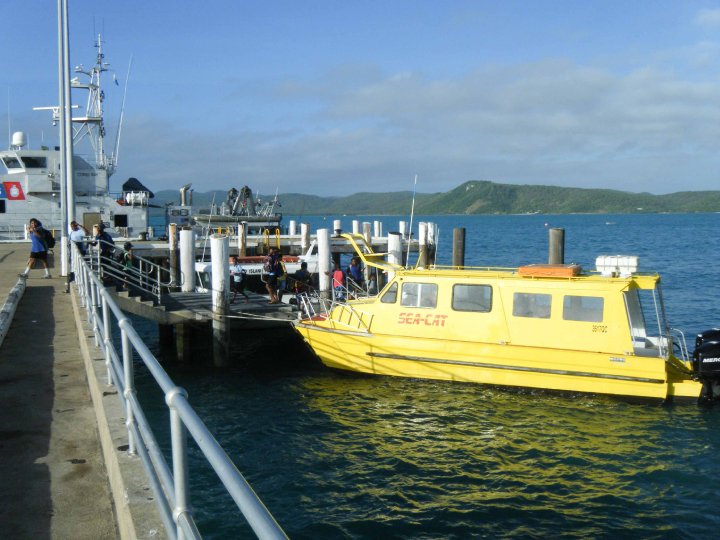

Torres Strait (Thursday & Hope Islands): Riding to the top of Cape York, Craig spent a couple of weeks in and around Seisia, Bamaga, Umagic, Injinoo, New Mapoon, Thursday Island and Horn Island. Here he encountered for the first time the distinct cultural difference with the people from the Torres Strait.
On Thursday Island Craig met up with legendary Seaman Dan.
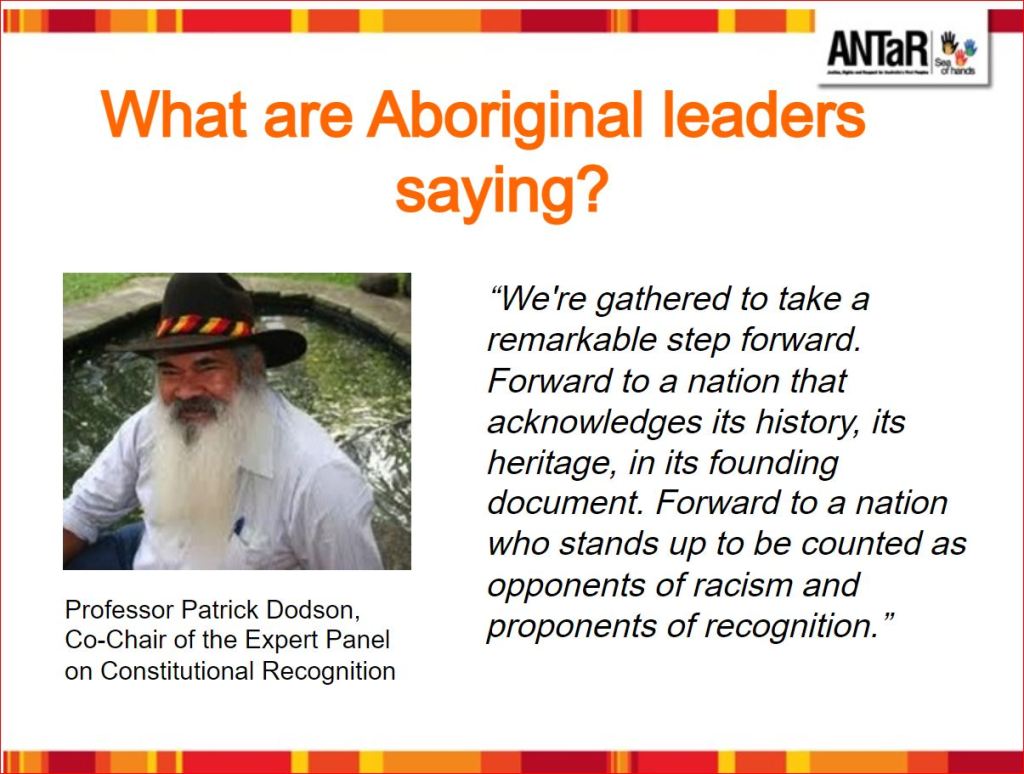
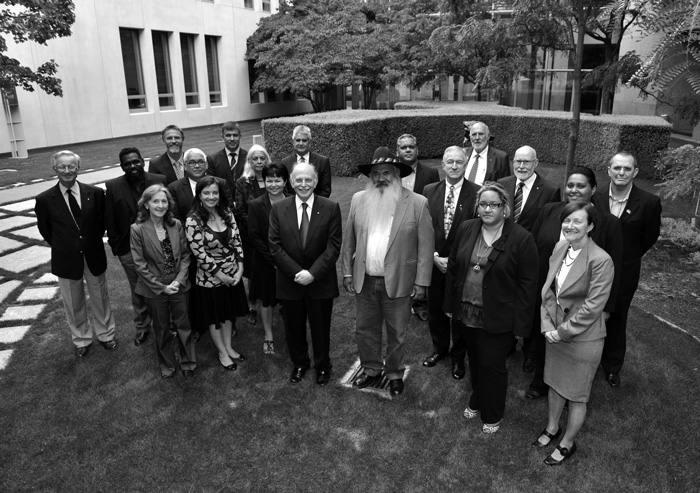


Images: Indigenous Law Bulletin – Jan/Feb 2012 pp. 21-22.
Expert Panel (2011-2012)
From 2011-2012, Craig assisted Expert Panel member Timmy ‘Djawa’ Burarrwanga with his participation on the panel and with a number of community consultations held across the top of the Northern Territory.
Community Consultations
Community Consultations with Expert Panel Members: Timmy ‘Djawa’ Burarrwanga, Professor Marcia Langton, Lauren Ganley and members of the Expert Panel Secretariat.
Communities Consulted with Timmy ‘Djawa’ Burarrwanga: Tiwi Islands, Manigrindra, Galiwin’ku (Elcho Island) and Yirrkala.
Brief Background
In 2010, the federal government established an Expert Panel to inquire into changing the federal Constitution so that Australia’s Indigenous peoples would be recognised in it. After wide-ranging consultation and receiving thousands of submissions, the panel delivered its report titled Recognising Aboriginal and Torres Strait Islander Peoples in the Constitution to Prime Minister Julia Gillard on 19 January 2012.
The Final Expert Panel Report and a Slide Presentation from ANTaR.





Lirrwi Yolngu Tourism (2011-2012)
From 2011-2012, Craig was employed as a Development and Mentoring Officer with Lirrwi Yolngu Tourism. He was based in Yirrkala in East Arnhem Land and worked alongside Manager Matt Grooby and the Lirrwi Directors.

Why Practice Triumps over Policy in Indigenous Affairs
[An excerpt from Mark Moran’s book ‘Series Whitefella Stuff: When solutions became the problem in Indigenous affairs‘]
“Indigenous affairs is a labyrinth of policies and programs. While there is largely consensus across Indigenous affairs on what the desired outcomes should be, there is great disarray in how to achieve them. A large number of government agencies, Indigenous organisations, NGOs and private corporations are nonetheless extremely busy working to ameliorate Indigenous disadvantage. There is little evaluation or knowledge exchange of the effectiveness of different approaches, or practice tools and frameworks. What exists is largely measured through externally set administrative Key Performance Indicators (KPIs). Success and failure are determined against overarching policy, which obscures the effects of actual projects, and what they may actually do. Thus, little is known of the actual interactions and realpolitik of local practice; of what actually works or doesn’t work in practice.
Policy purges… swings… mimics… and contradicts.
…solutions themselves become problems.” pp. 177-181